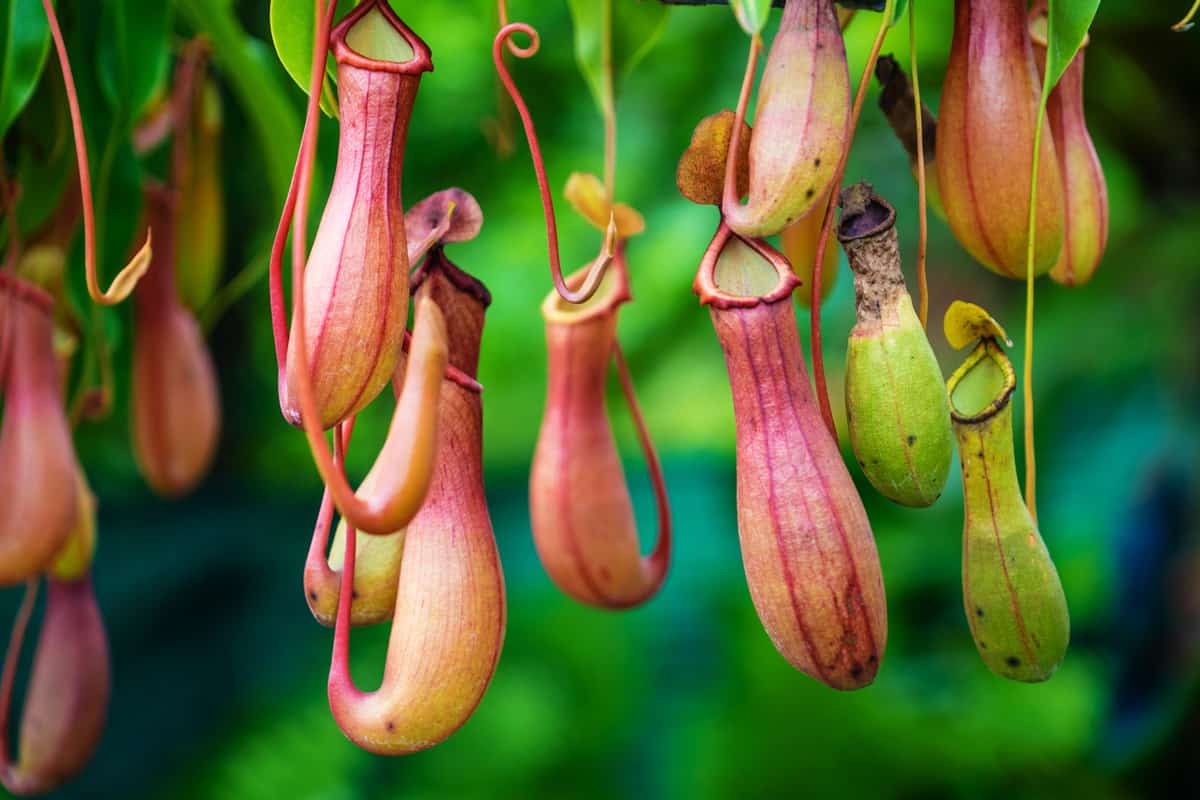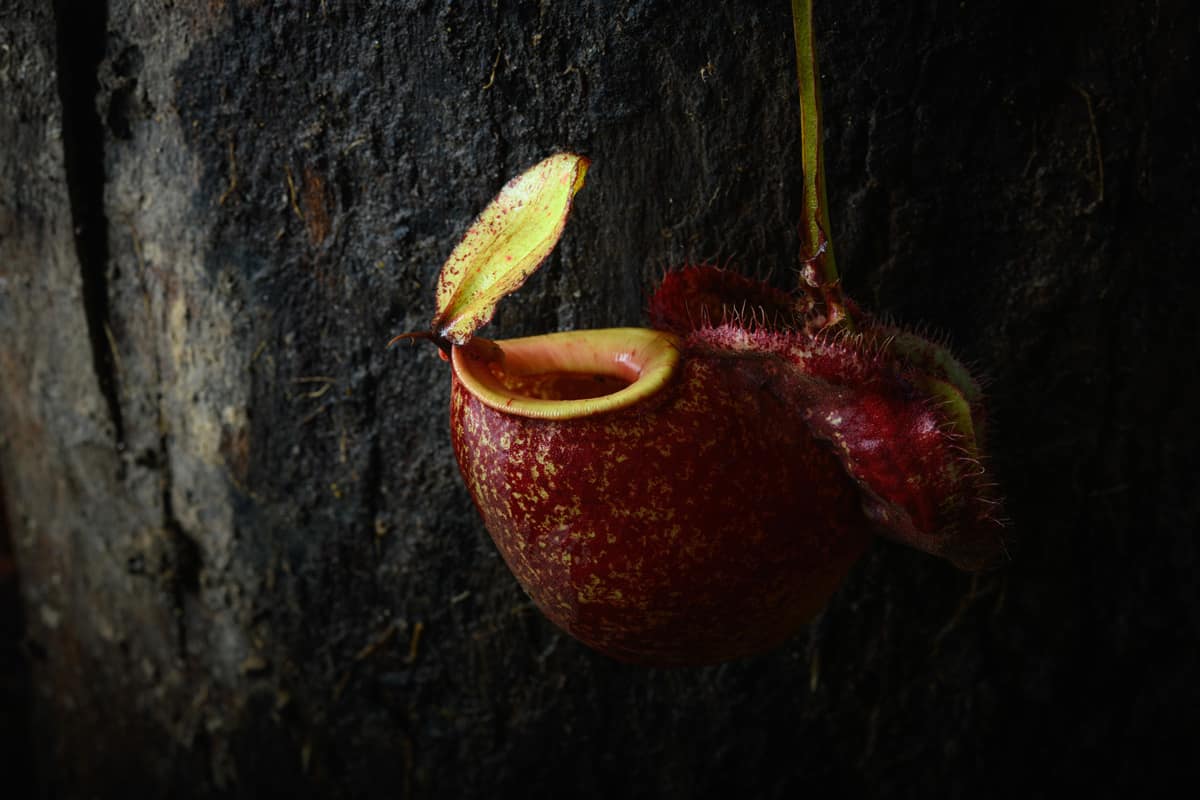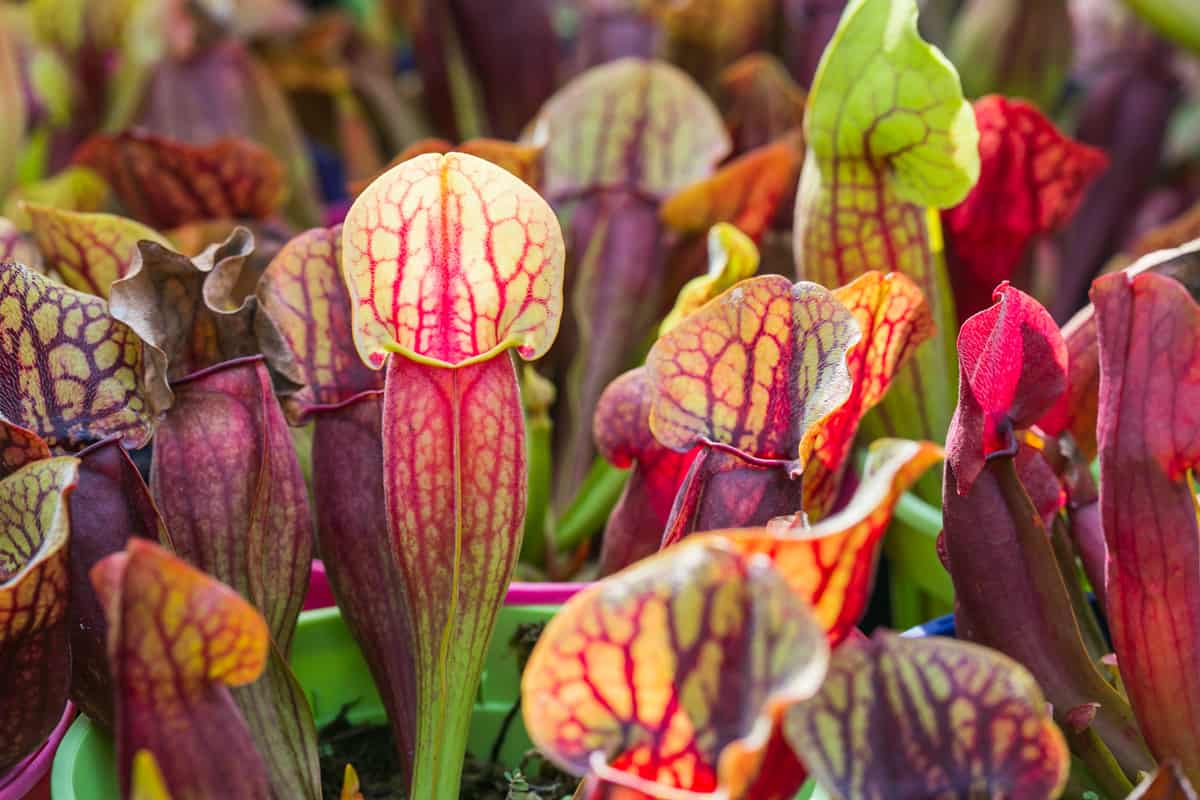Pitcher plants are a group of carnivorous plants that form special traps out of their modified leaves. They're not your average greenery! They capture unsuspecting insects and even small vertebrates. Unfortunately, going into a pitcher plant is a one-way trip. The plant secretes a sweet nectar that entices the victim to venture further inside, only for it to slowly decay in the trap.
Pitcher plants continue to bewilder scientists, and every year, more secrets are uncovered about their remarkable adaptations. Just recently, a new species of tropical pitcher plant was discovered. It forms its pitchers in a completely unique way. Who knows what other mysteries these captivating plants hold?

Stumbling Upon The Unusual
In North Kalimantan on the Indonesian side of Borneo, there is a new and distinct type of pitcher plant. Unlike all other known pitcher plants, the newly discovered Nepethenes pudica rarely produces pitchers above ground.
That's right!
Instead, these plants produce fully functioning pitfall traps underground.
The discovery of the Nepethenes pudica happened almost by chance. While on an expedition into an unexplored forest, researchers stumbled upon Nepenthes that didn't produce any pitchers. Curiosity got the best of them, and they slowly searched the area around the plant for signs of pitchers.
Their search revealed a few small aerial pitchers that were no more than nine centimeters tall and two centimeters wide. This first search also revealed young underground pitchers and a deformed pitcher that was sticking out from the soil.

Unclear on the magnitude of their discovery, the team continued on their path up to the mountain's summit. However, the researchers kept noticing more of these pitcher plants without any pitchers. They began to wonder if this was a new type of plant that evolved to the point where they lost their carnivorous nature.
Knowing that they needed to document this, the researchers started taking pictures. At this point, Ľuboš Majeský, one of the researchers, accidentally tore off a piece of moss from the base of the tree where they were photographing.
Miraculously, a cluster of maroon pitchers was revealed. They were growing from short shoots that were white because of the lack of chlorophyll.
The video below was taken by Martin Dančák, who was part of the research team who discovered this plant. Please watch to see the fantastic discovery!
A Closer Look At The Habitat
Once the researchers made their underground discovery, they returned to the other locations where they found pitcher plants without pitchers. Here they also discovered more of the subterranean pitfall traps. They studied Nepenthes pudica from five different places and were able to determine the type of habitat these plants prefer.

Currently, this species is known to occur on ridgetops in the lower montane rainforest. They can be found between 3,600 and 4,300 feet above sea level.
You can usually find N. pudica growing near the base of trees. The pitchers will form in holes underneath the tree's roots and are commonly hidden by a layer of moss. If there isn't a cavity available for the N. pudica to grow, it will form pitchers directly in the soil. Pitchers can also be found lying in forest litter or under moss.
N. pudica Description
This unique pitcher plant creates climbing shoots and underground basal shoots. The climbing shoots can grow up to 65 feet long and can be between four and six millimeters wide. The underground shoots are short and hold the well-developed pitchers. Underground shoots were not seen to branch or produce roots.
The pitchers for N. pudica are between seven and eleven centimeters high and three to five and a half centimeters wide. The walls are thin but tough. If pitchers are formed deeper underground, the walls get thicker and sturdier.
The Underground Carnivore's Diet
When a plant forms its carnivorous traps underground, what is there for it to eat? You might be surprised to learn that these plants have a lot of options on the menu! .
After investigating five locations, researchers found evidence of decay from an astonishing 1,785 individual invertebrates. Can you imagine the variety of creepy crawlies and other small creatures that fell victim to this plant's traps?
Pitchers that are found in tree-root cavities frequently feast on litter- and soil-inhabiting bug species. Researchers also found large quantities of dead particulate organic material.

When pitchers are formed in the soil or litter, mites, beetles, and ants are primarily found.
Overall, the number of animals this plant eats was very high, which is typical for carnivorous plants at this elevation. And when it comes to the ultimate carnivorous plant feast, researchers discovered that ants are the primary source of food, both above and below ground.
Significance of the Find

Finding N. pudica has been significant for several reasons. Firstly, this is the only known subterranean carnivorous plant. The other known subterranean carnivores are the Utricularia, Genlisea, and Philcoxia. Each uses a different method to trap their food and stick with a diet of small organisms.
This is obviously different from the N. pudica because these pitcher plants can trap and digest the exact same organisms as the rest of the aboveground Nepethenes.
Secondly, N. pudica is found in an area with other Nepethenes that grow above ground. This is interesting because it means that something other than unusual conditions caused these plants to evolve in the way they did.
These plants also don't grow toward the light like other plants do. This negatively phototropic nature is noted even in N. pudica that grow under moss or are slightly chlorophyllous.
Finally, the discovery of this plant also led to the discovery of a new annelid worm. The Pristina armata is found in the underground pitchers of the N. pudica. This is the first clitellate species to be described living in this sort of habitat and may complete its lifecycle within the pitcher's digestive fluid!
Final Thoughts
The N. pudica has certainly caused a stir in the scientific community. The unique way that it forms its pitchers goes against everything that we thought we knew about pitcher plants. Hopefully, this exciting discovery will lead to further research on how carnivorous plants develop and the animals that live symbiotically with them.
Curious about more discoveries? Check out "World Traveler Reveals This Unexpected Use Of The 'Awapuhi Plant."
